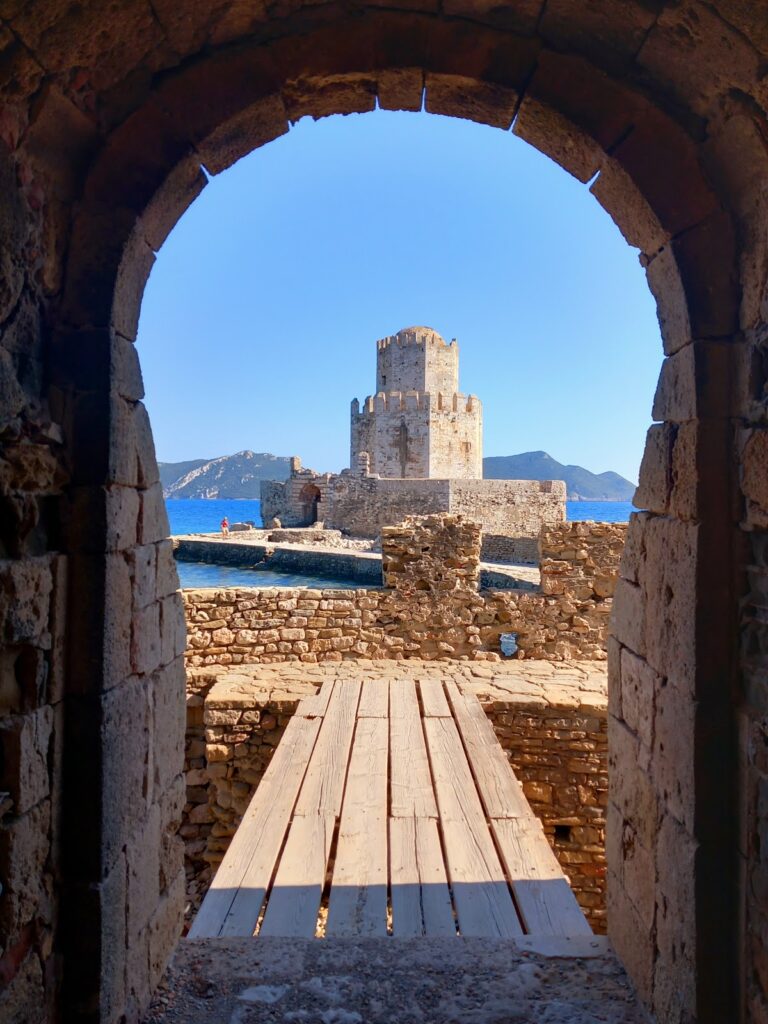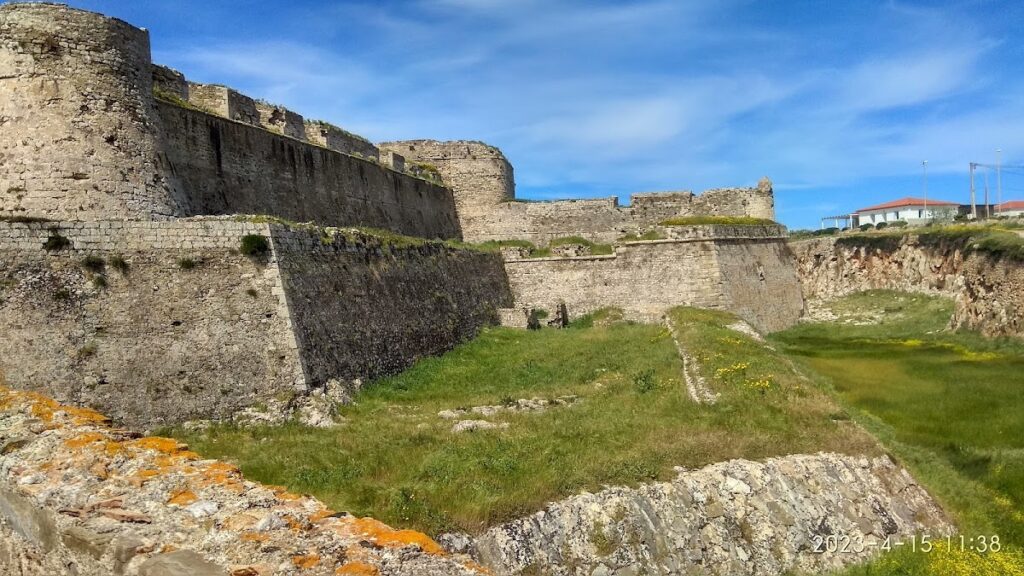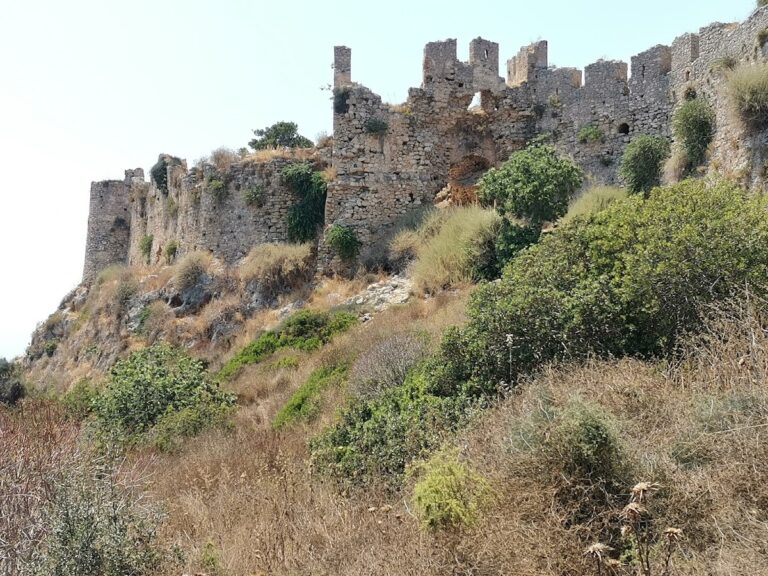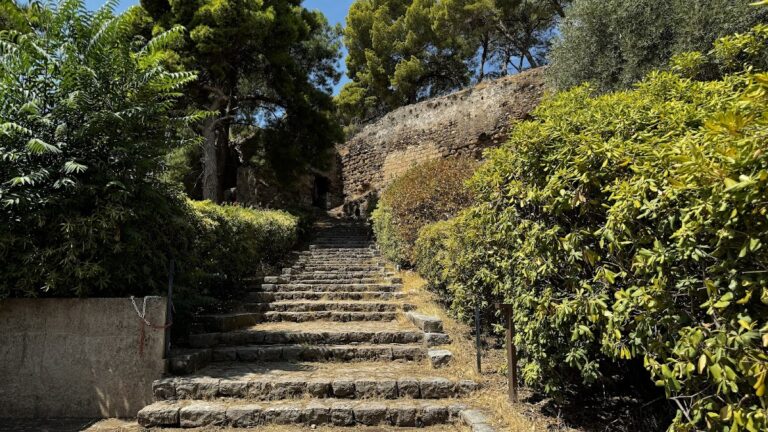Methoni Castle: A Historic Fortress in Greece
Visitor Information
Google Rating: 4.7
Popularity: Medium
Google Maps: View on Google Maps
Official Website: www.methoni-castle.gr
Country: Greece
Civilization: Unclassified
Remains: Military
History
Methoni Castle is located in the municipality of Methoni, Greece. It stands on a historic site originally developed by the Byzantine Empire on the remains of an ancient acropolis established in the 7th century BCE. The area included significant fortifications from the Roman period, specifically walls dating back to the reign of Emperor Trajan in the early 2nd century CE.
In the early 13th century, control of Methoni changed hands amidst the upheavals following the Fourth Crusade. After the Frankish Crusaders took over in 1205 and founded the Principality of Achaea, the Republic of Venice captured Methoni in 1206. The Venetians destroyed the existing fortress and by 1209 had rebuilt a new coastal stronghold. Under Venetian rule, the site was known as Modon and became an important naval base holding strategic command over maritime routes between the Western and Eastern Mediterranean. This position made the castle a center for anti-piracy efforts and a repair facility for Venetian fleets, earning it the reputation of being one of the main watchpoints of the Venetian state.
During the 14th century, the fortress remained central in regional conflicts, including the Venetian-Genoese wars. It also faced pressure from emerging Turkish beyliks in western Anatolia. To secure its position, Venice negotiated tribute payments and coordinated naval convoys departing from Methoni, underscoring the castle’s role in safeguarding trade and military passage.
The 15th century brought significant changes to the castle’s defenses to meet new challenges in warfare. Venetian engineers reconstructed the fortress to withstand artillery, replacing its tall medieval towers with lower, thicker bastions, and adding moats and defensive ditches. Despite these upgrades, the Ottoman Empire captured and severely damaged Methoni in 1500 following a naval defeat of the Venetian forces.
In the subsequent Ottoman period, between 1500 and 1573, an octagonal tower known as Burdzi was built on a nearby islet. Serving as both a harbor defense point and a prison, this structure became part of the fortress’s expanded maritime defenses.
Venice briefly regained Methoni in the late 17th century, around 1685 or 1686, but the Ottomans took it back in 1715 during their regional resurgence. During the Russo-Turkish War of 1768–1774, Russian and Greek forces laid siege to Methoni in 1770. Although they did not capture the castle, the siege caused heavy damage.
The Greek War of Independence brought further upheaval. In 1821, the fortress was surrendered to Greek revolutionaries but was recaptured by Egyptian Ottoman commander Ibrahim Pasha in 1825, who made it his residence. A few years later, in 1828, French troops under General Maison retook the castle, carrying out restorations. After these events, the town of Methoni was rebuilt outside the castle walls. The castle and town were formally integrated into the newly established Kingdom of Greece by 1833.
Remains
Methoni Castle occupies a roughly elliptical area of about 93,000 square meters on a narrow peninsula. It is connected to a small fortified islet by a stone bridge. The fortress is divided into two main parts: the southern section, which hosted urban buildings within enclosed walls featuring regularly spaced towers, and the northern citadel, which functioned as the military command center. This citadel is separated from the southern part by a lower wall with five towers, four square and one octagonal. The northern defenses include a broad dry moat and a strong curtain wall reinforced with two bastions.
The main entrance is situated centrally on the northern wall. Constructed from rectangular blocks of limestone, this gate is decorated with pilasters that display Corinthian capitals, a style dating to the post-1700 period, reflecting upgrades made during or after Ottoman reoccupation. In total, the castle has six gates, with three facing the harbor. Most of these gates are positioned at the ground level of defensive towers. The fortress walls consist of roughly hewn stones set in mortar and are crowned with battlements that allowed defenders to guard the perimeter.
The stone bridge connecting the peninsula fortress to the adjacent islet features fourteen arches. Approximately four meters high, forty-five meters long, and three meters wide, this bridge was built around 1828 by French forces led by General Maison, replacing an earlier wooden drawbridge. Within the walls, a vaulted or domed road passes through successive gates towards the residential zone. This area is isolated from the northern military enclosure by a six-meter-high wall supported by five towers constructed after 1500, illustrating Ottoman efforts to strengthen the fortress’s defenses.
In the southern urban section, vestiges remain of Venetian houses and a paved street running toward the sea gates. Among other surviving structures are the ruins of a Turkish bath and the Byzantine church of Hagia Sophia. Fragments of ancient Doric columns found here speak to the long sequence of settlement on the site, connecting the medieval construction to the classical past. Near the entrance stands a striking monolithic red granite column, known as the “Morosini stele.” Originally erected in 1483 and restored in 1686, this column features Byzantine-style capitals and once bore an inscription that has since been lost. The granite’s origin is notable, as such red granite is not found locally in the region.
Embedded in the northern walls are various Venetian coats of arms displaying the winged Lion of Saint Mark, the symbol of Venice, along with inscriptions marking constructions under commanders such as Antonio Loredan and members of the Bembo family from before 1500. The western walls are constructed more modestly, and fragments of ancient Methoni’s city walls were uncovered here after explosive impacts during World War II. On the eastern side, the original walls once extended into the sea, though they now terminate at the beach. Parallel to these walls lay a pier forming a small fortified harbor, known as a mandrachio, complementing the larger harbor situated to the northeast.
Inside the castle are several cisterns that once collected and stored water for the inhabitants. Also within the grounds, remnants of a British prisoner of war cemetery from World War II exist. The prominent sea gates located on the southern walls have undergone recent restoration to preserve their historical character.
One of the most distinctive features outside the main fortress is the Burdzi tower. This two-story octagonal structure rises on a rocky islet south of the castle itself. Built between 1500 and 1573 during the Ottoman era, the tower has a semi-circular dome and contains a cistern on its lower floor. Small defensive openings, characteristic of early Ottoman military architecture, are visible. Though wooden floors within no longer survive, the tower today remains a notable example of Ottoman harbor fortifications linked to Methoni Castle.
Together, these features embody the complex history of the fortress, reflecting successive layers of Byzantine, Venetian, Ottoman, and modern European influence, as the castle adapted over centuries to advances in military technology and shifting geopolitical realities.









